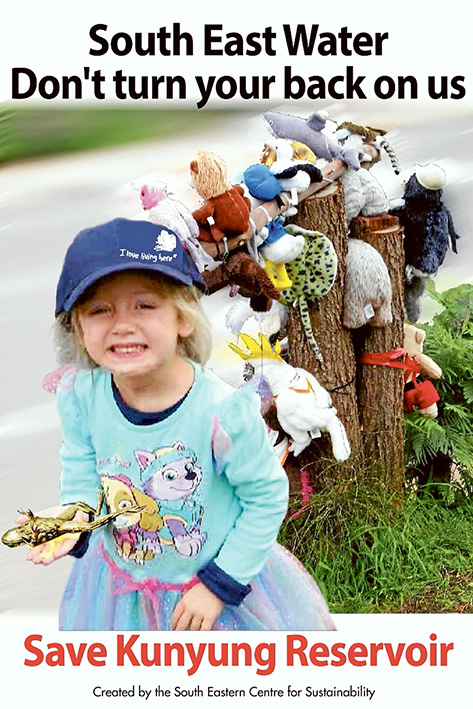
PROTESTERS fighting to protect Mt Eliza’s decommissioned Kunyung Rd reservoir from development are calling on South East Water to bow to the community’s wishes when deciding the future of the site.
On Thursday members of the South Eastern Centre for Sustainability, which has been pressuring South East Water not to sell the site for development, began erecting protest signs at strategic locations in Frankston and Mt Eliza. President Steve Karakitsos said previous public relations campaigns by SEW had placed significant importance on community consultation and the work of community members in protecting the environment.
But he said the organisation’s refusal to reveal alternative plans for the site affectively “outlined intentions” to ignore residents’ concerns and develop the site into housing.
He said the corporation should respect the public’s desire to have the site preserved for the flora and fauna within it, or saved as public space.
“It is largely in the hands of South East Water to halt its negotiations about the sale of the property in order to adhere to official obligations aimed at fulfilling the tenets of their official charter in catering for the needs of the public,” he said.
Mr Karakitsis said the group was ramping up its campaign to protect the pristine environment of the reservoir as there had been no progress, or “constructive” dialogue between South East Water and the public, despite many requests to discuss plans for the site.
Last year SEW made moves to re-configure the 20-plus hectare parcel known as 57 Kunyung back to its historic state as 24 large housing lots, each measuring just under 1000 square metres. The site is within a 825-lot suburban housing estate established in 1924.
SEW spokesman Rupert Posner has previously told The Times that the authority had to “consider the most efficient use of our infrastructure and land” to deliver value for customers.
On Monday, he said no decision had yet been made on the site’s future.
Mr Karakitsos said he hoped SEW would take heed of the signs and implement strategies to permanently support the creation of a public reserve, as it had previously done in Frankston and Moorooduc.
